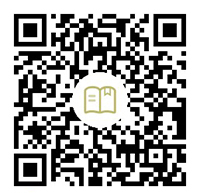在 Python 中将字典转换为列表
Python 中的字典是由键-值对组合而成。在 key 的帮助下,你可以访问字典里面的值。现在,在 Python 中把一个字典转换为一个列表可能意味着不同的事情。要么是
- 你可以将键分开,并将其转换为一个列表。
- 你可以将值分开,并将其转换为一个列表。
- 将字典中的键和值对转换为元组列表。
在 Python 中使用 keys() 方法将键从字典转换为列表
假设你有一个名为 dictionary 的字典,有四键值对。
dictionary = {"a": "Apple", "b": "Banana", "c": "Cherries", "d": "Dragon Fruit"}
listOfKeys = dictionary.keys()
print("Type of variable listOfKeys is: ", type(listOfKeys))
listOfKeys = list(listOfKeys)
print("Printing the entire list containing all Keys: ")
print(listOfKeys)
print("Printing individual Keys stored in the list:")
for key in listOfKeys:
print(key)
输出:
Type of variable listOfKeys is: <class 'dict_keys'>
Printing the entire list containing all Keys:
['a', 'b', 'c', 'd']
Printing individual Keys stored in the list:
a
b
c
d
你可以使用 keys() 方法,它将从字典中提取所有 keys,然后将结果(所有 keys)存储在变量 listOfKeys 中。
现在你必须在 list() 函数的帮助下将变量 listOfKeys 转换成一个列表,因为此时如果你检查变量 listOfKeys 的类型,那么它将是 <class 'dict_keys'>。这就是为什么我们要将变量的类型改为 List,然后将其存储在同一个变量中,即 listOfKeys。
至此,你已经成功地使用 keys() 函数将所有键从字典中分离出来,并将它们转换为一个列表。最后,要打印列表中的元素,你必须使用 for 循环,它遍历每个元素并打印它。
在 Python 中使用 values() 方法将字典中的值转换为列表
values() 方法的工作方式与 keys() 方法相同。唯一的区别是 values() 方法返回所有的字典值而不是键。
dictionary = {"a": "Apple", "b": "Banana", "c": "Cherries", "d": "Dragon Fruit"}
listOfValues = dictionary.values()
print("Type of variable listOfValues is: ", type(listOfValues))
listOfValues = list(listOfValues)
print("Printing the entire list containing all values: ")
print(listOfValues)
print("Printing individual values stored in the list:")
for val in listOfValues:
print(val)
输出:
Type of variable listOfValues is: <class 'dict_values'>
Printing the entire list containing all values:
['Apple', 'Banana', 'Cherries', 'Dragon Fruit']
Printing individual values stored in the list:
Apple
Banana
Cherries
Dragon Fruit
你在 dictionary 上使用 values() 函数,然后将 values() 函数返回的结果存储在变量 listOfValues 中。
如果你检查变量 listOfValues 的类型,那么它的类型将是 <class 'dict_values'> 类。但你希望它是 <class 'list'> 类。因此,你必须使用 list() 函数将变量 listOfValues 转换为一个列表,然后将结果存储在同一个变量中,即 listOfValues。
最后,使用循环打印列表 listOfValues 内的所有值。
在 Python 中把字典转换为元组列表
一个字典可以通过两种方式转换成一个元组列表。一种是 items() 函数,另一种是 zip() 函数。
1. items() 函数
items() 函数将字典元素转换为 <class 'dict_items'>,其结果存储在 myList 变量中。myList 需要被转换为一个列表,因此,你必须使用 list() 函数将其类型化,然后将结果存储在同一个变量中,即 myList。
dictionary = {"a": "Apple", "b": "Banana", "c": "Cherries", "d": "Dragon Fruit"}
myList = dictionary.items()
print(type(myList))
myList = list(myList)
print(myList)
输出:
<class 'dict_items'>
[('a', 'Apple'), ('b', 'Banana'), ('c', 'Cherries'), ('d', 'Dragon Fruit')]
2. zip() 函数
zip() 函数需要两个参数,第一个是使用 keys() 函数的 key,第二个是使用字典中的 values() 函数的 value。然后它返回一个 zip 对象,你可以将其存储在一个变量中,在本例中,myList。
dictionary = {"a": "Apple", "b": "Banana", "c": "Cherries", "d": "Dragon Fruit"}
myList = zip(dictionary.keys(), dictionary.values())
print(type(myList))
myList = list(myList)
print(myList)
输出:
<class 'zip'>
[('a', 'Apple'), ('b', 'Banana'), ('c', 'Cherries'), ('d', 'Dragon Fruit')]
现在你必须使用 list() 函数将 zip 对象转换成 list。然后,你可以将最终的结果存储在同一个名为 myList 的变量中,或者根据你的要求存储在不同的变量中,最后打印整个列表。
3. Python 2.x 中的 iteritems()
在 Python v2.x 中,你还有一个 iteritems() 函数,它的工作方式和 items() 函数几乎一样。
iteritems() 从 dictionary 中获取每个元素并将其转换为不同的类型。如果你检查变量 myList 的类型,它将是 <type 'dictionary-itemiterator'> 类型。所以,你必须使用函数 list() 将其转换为 List。如果你检查变量 myList 的类型,那么它的类型将是 <type 'list'>,如果你打印它,那么元素将以一个元组列表的形式出现。
dictionary = {"a": "Apple", "b": "Banana", "c": "Cherries", "d": "Dragon Fruit"}
myList = dictionary.iteritems()
print("Type of myList is: ", type(myList))
myList = list(myList)
print(myList)
输出:
('Type of myList is: ', <type 'dictionary-itemiterator'>)
[('a', 'Apple'), ('c', 'Cherries'), ('b', 'Banana'), ('d', 'Dragon Fruit')]
确保你在 Python v2.x 编译器上运行上述代码;否则,你会得到一个错误,因为在 Python v3.x 中没有此方法。
相关文章
Pandas DataFrame DataFrame.shift() 函数
发布时间:2024/04/24 浏览次数:133 分类:Python
-
DataFrame.shift() 函数是将 DataFrame 的索引按指定的周期数进行移位。
Python pandas.pivot_table() 函数
发布时间:2024/04/24 浏览次数:82 分类:Python
-
Python Pandas pivot_table()函数通过对数据进行汇总,避免了数据的重复。
Pandas read_csv()函数
发布时间:2024/04/24 浏览次数:254 分类:Python
-
Pandas read_csv()函数将指定的逗号分隔值(csv)文件读取到 DataFrame 中。
Pandas 多列合并
发布时间:2024/04/24 浏览次数:628 分类:Python
-
本教程介绍了如何在 Pandas 中使用 DataFrame.merge()方法合并两个 DataFrames。
Pandas loc vs iloc
发布时间:2024/04/24 浏览次数:837 分类:Python
-
本教程介绍了如何使用 Python 中的 loc 和 iloc 从 Pandas DataFrame 中过滤数据。
在 Python 中将 Pandas 系列的日期时间转换为字符串
发布时间:2024/04/24 浏览次数:894 分类:Python
-
了解如何在 Python 中将 Pandas 系列日期时间转换为字符串

